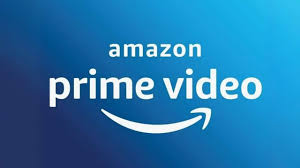Netflix: Revolutionizing the World of Digital Entertainment
Introduction: The Rise of Streaming Giants
In today’s digital era, entertainment has transformed dramatically. Gone are the days when families gathered around the television to watch scheduled shows or visited DVD stores to rent movies. The world has entered the age of on-demand streaming, and leading this transformation is Netflix — the global streaming giant that redefined how people watch, share, and experience entertainment.
Founded in 1997 by Reed Hastings and Marc Randolph, Netflix started as a DVD rental-by-mail company in the United States. Over the decades, it evolved into one of the most powerful entertainment platforms in the world, boasting over 260 million subscribers across more than 190 countries. Today, Netflix is synonymous with quality, variety, and innovation in digital entertainment.
The Evolution of Netflix: From DVDs to Digital Dominance
1. The Early Days: DVD Rentals
When Netflix was launched, its business model was simple yet revolutionary — customers could rent DVDs online and have them delivered by mail. This was a groundbreaking concept in the late 1990s, as it eliminated the inconvenience of late fees and store visits that dominated the video rental market led by Blockbuster.

2. Transition to Streaming (2007)
The turning point came in 2007, when Netflix introduced online streaming, allowing subscribers to instantly watch movies and TV shows over the internet. This marked the beginning of the streaming revolution, paving the way for Netflix to become a household name worldwide.
3. Global Expansion and Original Content
In 2010, Netflix began expanding internationally, first entering the Canadian market and later spreading across Europe, Asia, and Africa. By 2016, Netflix was available almost everywhere globally.
The company also made a strategic move into original content production, launching Netflix Originals like House of Cards (2013) and Orange Is the New Black (2013). These shows were massive successes, setting a new standard for online storytelling and cinematic quality.
Netflix Originals: The Game Changer
1. Quality and Creativity
Netflix’s decision to invest in original programming was a masterstroke. Today, Netflix produces thousands of original movies, documentaries, and series in multiple languages. Iconic shows like Stranger Things, The Crown, Money Heist (La Casa de Papel), Squid Game, and Wednesday have captured global audiences.
2. Supporting Global Talent
Netflix’s global reach allows it to collaborate with creators, directors, and actors from diverse cultures. By producing local-language content such as Sacred Games (India), Lupin (France), and Dark (Germany), Netflix ensures it resonates with audiences worldwide. This localized approach enhances GEO optimization, making Netflix highly relevant in every region it operates.
3. Awards and Recognition
Netflix Originals have received numerous awards, including Emmys, Golden Globes, and Oscars, cementing the company’s place as a true entertainment powerhouse.
User Experience: Personalized and Seamless
1. Advanced Recommendation Algorithms
One of Netflix’s key strengths is its powerful AI-driven recommendation system. The platform analyzes user behavior — what you watch, how long you watch it, and your preferences — to suggest movies and series tailored to your taste. This personalized experience keeps users engaged and coming back for more.
2. Multi-Device Accessibility
Netflix can be accessed on virtually any device — smartphones, tablets, smart TVs, gaming consoles, and laptops. The platform also supports offline downloads, enabling users to watch their favorite content anywhere, anytime.
3. Multiple Subscription Plans
Netflix offers flexible pricing and plans to suit different budgets and viewing habits. From Basic with Ads to Premium Ultra HD, users can choose the plan that best fits their needs.
Technological Innovation Behind Netflix
1. Cloud Infrastructure
Netflix relies heavily on cloud computing, primarily using Amazon Web Services (AWS) to deliver content efficiently across the globe. This ensures high-quality streaming with minimal buffering.
2. Video Compression and Adaptive Streaming
Netflix uses advanced video compression technology to optimize streaming quality based on internet speed. Whether you’re on a 4K TV or a mobile phone with limited data, Netflix automatically adjusts resolution to provide the best possible viewing experience.
3. Data-Driven Decisions
Every decision at Netflix — from what content to produce to how to market it — is data-driven. The company’s analytics tools monitor viewing habits and help predict what audiences will love next, ensuring continuous innovation.
Impact of Netflix on the Entertainment Industry
1. Disrupting Traditional Media
Netflix completely disrupted the traditional cable TV model, forcing major networks and film studios to rethink their strategies. The concept of binge-watching and on-demand access to entire seasons of shows changed how people consume content.
2. Boosting Global Storytelling
By investing in local stories and giving creators creative freedom, Netflix has empowered storytellers from all over the world. Today, series from South Korea, Spain, and India are watched and loved by audiences in America, Europe, and beyond.
3. The Decline of Piracy
Netflix’s affordable subscription model and accessibility have contributed to a decline in online piracy. When users can easily access quality content legally, the incentive to pirate decreases significantly.
Netflix and SEO/GEO Optimization: A Case Study in Success
1. Localized Content Strategy
Netflix uses GEO-optimized content strategies, ensuring that users in every country see shows and recommendations tailored to their region. This includes local-language subtitles, dubbing, and region-specific content collections.
For example:
-
In Pakistan, Netflix promotes local titles like Zindagi Tamasha and regional hits from Bollywood.
-
In Japan, anime fans get prioritized recommendations like Attack on Titan or One Piece.
-
In Spain, Money Heist remains a cultural symbol of rebellion and creativity.
2. SEO Optimization through Smart Metadata
Netflix optimizes its massive content library through metadata, keywords, and categories that enhance discoverability. When users search for terms like “romantic comedies,” “sci-fi thrillers,” or “family movies,” Netflix instantly curates relevant options — just like an internal search engine.
3. Social Media and Brand Visibility
Netflix maintains a strong digital marketing presence on platforms like YouTube, Instagram, TikTok, and Twitter, creating memes, teasers, and behind-the-scenes content. These social strategies boost brand recognition, enhance engagement, and drive organic SEO traffic.
Challenges Faced by Netflix
1. Increasing Competition
The streaming market is now highly competitive. Giants like Disney+, Amazon Prime Video, HBO Max, Hulu, and Apple TV+ have entered the field, each with exclusive content and pricing strategies. Staying ahead requires constant innovation and investment in original content.
2. Subscription Fatigue
With multiple streaming platforms available, many users experience subscription fatigue, canceling or rotating services to save costs. Netflix must continue to prove its value through compelling content and customer experience.
3. Password Sharing and Revenue Loss
Netflix has struggled with widespread password sharing, leading to lost revenue. The company recently introduced measures to limit account sharing and encourage users to create their own profiles.
4. Content Saturation
While Netflix releases hundreds of titles every year, not all gain traction. Balancing quality over quantity remains a key challenge to maintain its brand identity.
Future of Netflix: Innovation, AI, and Interactive Content
1. AI-Driven Content Creation
Netflix is exploring AI and machine learning for script analysis, marketing, and even predictive storytelling. These technologies will help identify audience preferences and create more engaging narratives.
2. Interactive and Immersive Experiences
Shows like Black Mirror: Bandersnatch introduced interactive storytelling, where viewers control the narrative. Netflix plans to expand this format, merging gaming, film, and artificial intelligence into one seamless experience.
3. Global Expansion and Local Production
Netflix continues to invest in regional productions, partnering with local filmmakers to tell authentic stories. The next phase of growth lies in emerging markets across Asia, Africa, and the Middle East.
Conclusion: Netflix as the Future of Global Entertainment
Netflix isn’t just a streaming platform — it’s a cultural phenomenon that reshaped the entertainment landscape. From revolutionizing how stories are told to bridging global audiences through diverse content, Netflix has become the symbol of modern entertainment.
Its GEO-optimized strategies, data-driven innovation, and commitment to creativity have allowed it to stay ahead in a highly competitive market. Whether it’s watching a gripping K-drama from Seoul, a suspenseful thriller from Berlin, or a heartwarming romance from Lahore, Netflix has truly made the world feel connected through the universal language of storytelling.
As the streaming wars continue, one thing is clear — Netflix isn’t just part of the future of entertainment; it is the future itself.



